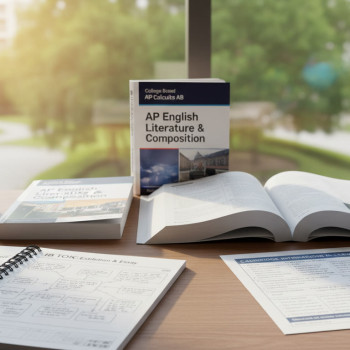Introduction — Why AP Choices Matter for Baylor Pre‑Med Students
Deciding which Advanced Placement (AP) courses to take in high school feels like a high‑stakes game — especially when you’re thinking about a pre‑medical track and aiming for Baylor. The right AP lineup can save time, ease your first semesters, and let you dive sooner into upper‑level science and clinical experiences. But choices are more than just “take everything” — they’re strategic decisions about preparation, credits, and your mental bandwidth.
Before we jump in: I want to be candid. University credit, placement, and departmental rules change over time, and policies at Baylor (or any school) can be updated. This article gives a practical framework — what to prioritize, what trade‑offs to weigh, and real‑world sample plans you can adapt. Wherever possible, confirm your final plan with Baylor admissions and the registrar when you’re admitted.
Big Picture: What APs Do for Pre‑Med Students
AP courses help in three main ways:
- Preparation: AP science and math build content knowledge and study habits for college STEM classes.
- Placement and Credit: High AP exam scores can lead to placement into higher courses or college credit — freeing your schedule for research, volunteering, or a minor.
- Demonstrating Rigor: Colleges like to see that you challenged yourself. A balanced, ambitious AP schedule shows readiness for pre‑med demands.
Common Pre‑Med AP Priorities
Most pre‑med students prioritize AP courses that overlap with common pre‑med prerequisites or strengthen quantitative and analytical skills:
- AP Biology
- AP Chemistry
- AP Calculus AB/BC
- AP Physics (1, C: Mechanics, or C: E&M depending on background)
- AP English Language or Literature
- AP Statistics (helps for research and MCAT prep)
Understanding Limits — Credits, Placement, and Departmental Rules
Not all AP credits are created equal. Universities (including Baylor) typically have layers of rules:
- General University Credit: Some AP scores earn general elective or college credit.
- Departmental Credit/Placement: Science and math departments may accept AP for placement only (e.g., bypassing introductory labs but not granting credit toward a major requirement).
- Maximum Credit Caps: Schools often cap the amount of transfer or test credit that counts toward a degree.
- Sequence Requirements: Even with AP credit, many pre‑med majors require college‑level labs or specific courses taken at the university.
In practice, this means you should plan for three scenarios in freshman year: (1) You get placement and credit and can move ahead; (2) You get placement only and must take a lab or alternate course; (3) You don’t receive credit/placement and must take the course as usual. Building flexibility into your plan keeps stress down.
Smart AP Combinations for a Baylor‑Mindset Pre‑Med Plan
Here are realistic AP combinations and why they make sense. Think of them as palettes you can mix depending on strength, interest, and energy.
Core Science Trio (Most Impactful)
- AP Biology: Great foundation, but remember AP Bio often focuses on breadth — college courses go deeper and emphasize labs. Even with credit, take at least one college‑level lab if your major requires it.
- AP Chemistry (Preferably AP Chem 1 or equivalent): Strong predictor of success in organic chemistry if you score well. AP Chem helps with general chemistry placement.
- AP Physics (Mechanics or 1): Valuable for MCAT reasoning and for later coursework; AP Physics C is stronger preparation for engineering‑heavy tracks.
Quantitative Pair
- AP Calculus AB or BC: Calculus BC is excellent if you’re comfortable — it often covers material that some majors expect in first‑year calculus.
- AP Statistics: Underused but incredibly helpful for research, epidemiology concepts, and MCAT data interpretation.
Humanities and Communication
- AP English Language or Literature: Critical reading and written communication are crucial for medicine — for essays, patient notes, and interviews.
- AP Psychology: Helpful background for behavioral sciences on the MCAT and for understanding patient care.
Balancing Rigor and Burnout
Students frequently believe success equals stacking every AP available. That’s a fast track to burnout. Admissions officers and med schools prefer consistent excellence over scattered overload. Here’s how to balance:
- Choose 3–4 deep APs that align with pre‑med prerequisites and your strengths.
- Mix in 1–2 humanities or project‑based APs to show breadth and maintain engagement.
- Keep at least one semester lighter for extracurricular growth: research, clinical hours, leadership, or volunteering.
Practical Tip
If you’re excellent at math, lean into BC and Statistics. If biology is your strength, accept AP Bio but pair it with strong chemistry. The goal: demonstrate mastery where it matters and use remaining time to build experiences that medicine values.
Sample AP Roadmaps for Different Student Profiles
Below are three sample four‑year high school plans (sophomore to senior year AP lineup) targeted for different starting points. Each plan balances preparation, throughput, and wellbeing.
| Student Profile | Year 10 | Year 11 | Year 12 |
|---|---|---|---|
| Strong STEM Background | AP Biology, AP Calculus AB | AP Chemistry, AP Physics 1, AP Statistics | AP Calculus BC (if not yet), AP English Language |
| Balanced Student | AP Biology, AP English Language | AP Chemistry, AP Calculus AB | AP Physics 1, AP Psychology |
| Late Bloomer / Heavy ECs | AP Biology (self‑study), AP Human Geography | AP Chemistry (school or summer), AP English | AP Statistics, AP Physics 1 (if manageable) |
How to Use AP Scores Strategically at Baylor (or Any University)
Use AP outcomes to free up your schedule for high‑impact college activities. If AP gives you placement out of introductory courses, those freed slots are gold for:
- Undergraduate research (start early and aim for an ongoing project)
- Volunteering in clinical settings
- Shadowing physicians and networking
- Pursuing a minor or coursework in ethics, public health, or data science
Important Note on Labs
Many institutions accept AP lecture credit but require on‑campus labs for major requirements. If Baylor follows similar practice, you may still need to take university labs even if you place out of lecture courses — plan for that when scheduling freshman year.
Study Strategies and AP Exam Tactics for High Scores
Scoring a 4 or 5 matters for credit and placement. Here’s a practical study plan that balances learning with wellbeing:
- Start Early: Give yourself 10–12 weeks of focused review before the exam. Short, regular study beats cramming.
- Active Practice: Use previous AP free‑response questions and practice multiple choice under timed conditions.
- Target Weaknesses: Build a one‑page cheat sheet of concepts you routinely miss and review it daily in the month before the exam.
- Simulate Exam Days: Do at least two full timed practice exams to build stamina and pacing.
- Group Study Smartly: Use peers to quiz each other but keep sessions focused and time‑boxed.
How Tailored Tutoring Helps
Personalized tutoring — for example, Sparkl’s 1‑on‑1 guidance — can make review time more efficient by focusing on your specific knowledge gaps and exam habits. A tutor can craft a tailored study plan, give targeted feedback on free‑response answers, and use AI‑driven insights to prioritize topics that will improve your score fastest.
Real‑World Examples: Students Who Used APs Well
Story 1: Maya used AP Chemistry and Calculus scores to skip one semester of intro classes. She used the freed time to join a faculty lab in sophomore year and published a poster at a regional conference — a standout item on med‑school applications.
Story 2: Jamal scored a 5 on AP Biology but chose to retake an on‑campus introductory biology lab to get hands‑on experience and faculty recommendations. His decision cost a semester of potential credits but improved his research and letters of recommendation.
Both approaches are valid. The lesson: use AP credit strategically, but don’t let credit replace meaningful college experiences.
Checklist for Applying AP Credit to Your Baylor Pre‑Med Track
- Confirm which AP scores Baylor accepts for credit and which earn placement only.
- Ask whether science majors require on‑campus labs regardless of AP lecture credit.
- Verify if there’s a maximum number of AP or transfer credits that apply to degree progress.
- Plan freshman year schedules that remain flexible for different AP outcomes.
- Use freed slots for research, clinical experience, or advanced coursework rather than overloading on electives.
Planning Freshman Year: Two Practical Freshman Schedules
Here are two adaptable freshman schedules depending on how your AP credits are accepted. Adjust based on actual placement and degree requirements.
| Scenario | Typical Courses |
|---|---|
| AP Scores = Credit + Placement | Organic Chemistry I (or advanced science), Intro to Research Methods, English Composition (if needed), Elective or Language, Freshman Seminar |
| AP Scores = Placement Only (No Credit) | General Chemistry with Lab (if required), Calculus or Statistics (if placement allows), English Composition, Intro to Psychology or Public Health, Clinical Volunteering |
Common Questions Parents and Students Ask
Should I take AP Chem and AP Bio both?
Ideally yes if you can handle the workload — they complement each other. If you must choose, AP Chemistry often predicts success in organic chemistry, which is a gatekeeper for pre‑med students.
Is it risky to rely on AP credit to graduate early?
Yes — curricular changes, credit caps, and major requirements can complicate early graduation plans. Use AP credits as flexibility rather than a guaranteed shortcut.
How much do AP scores matter to med‑school admissions?
Med schools don’t see your AP scores; they see college coursework and GPA. APs matter because they shape your college trajectory: strong APs can let you take advanced and medically relevant classes earlier, which can strengthen your GPA and research opportunities.
How to Communicate AP Choices in Your Baylor Application
On your college application, frame APs as evidence of intentional preparation, not just transcript padding. Briefly highlight:
- Why you chose each AP (e.g., passion for biology, desire to strengthen quantitative skills).
- What you learned beyond content — lab techniques, critical writing, or research exposure.
- How AP credit freed time for meaningful pre‑med experiences (if applicable).
Final Thoughts — Strategy Over Checklist
The smartest AP plan is personalized: it matches your strengths, frees up meaningful opportunities in college, and preserves your wellbeing. For many Baylor‑bound pre‑med students, the ideal strategy is not merely a list of top AP titles, but a roadmap that balances content mastery, hands‑on experience, and the flexibility to adjust after admission.
Where a helping hand makes a difference: personalized tutoring and tailored study plans (like Sparkl’s 1‑on‑1 tutoring with expert tutors and AI‑driven insights) can streamline AP prep and help you convert study hours into higher scores and deeper understanding. Use that support to sharpen weak spots, improve free‑response answers, and enter college confident and strategically planned.

Action Plan: What To Do Next (Week‑By‑Week for the Next 12 Weeks)
Use this practical checklist as a final sprint plan toward AP exams or as a preparation roadmap during the school year.
- Weeks 1–2: Take a diagnostic practice exam for each AP subject you plan to take. Identify weak topic areas.
- Weeks 3–6: Build a weekly schedule dividing topics into small, repeatable blocks (30–60 minutes). Include active recall and spaced repetition.
- Weeks 7–9: Start free‑response practice; get at least one tutor or teacher to give feedback on your answers.
- Weeks 10–11: Two full timed practice exams spaced a week apart; review mistakes thoroughly.
- Week 12: Light review, cheat sheet per subject, sleep well, and finalize logistics for test day.

Closing — You’ve Got Options, Not Deadlines
Preparing for a Baylor pre‑med path with AP courses is a marathon that rewards thoughtful planning more than impulse. Take stock of your strengths, choose APs that give you leverage, and keep time for research and clinical experience. If targeted help would be useful, consider tailored tutoring support to maximize study efficiency and outcomes.
Above all: aim for sustained excellence rather than unsustainable overload. With the right choices and support, APs can be a launchpad — not just a hurdle — on your path to Baylor and beyond.
























No Comments
Leave a comment Cancel